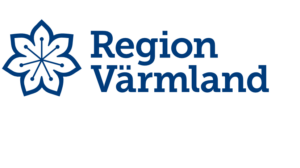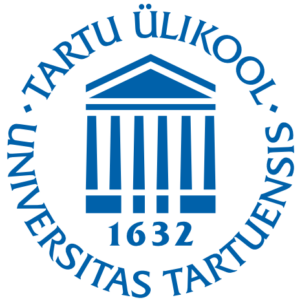|
Welcome to the CULTURALITY project newsletter |
View online
|
| |
|
Between Seasons: from warmth to retreat
|
| |
|
Just as in our very first issue, we find ourselves again in a moment of gathering and reflection, attuned to the wisdom of the colder months. The turning of the year once again draws us into autumn and winter, seasons that slow the pace of life and invite us to look inward. Where spring and summer are marked by openness, growth, and movement across the land, the colder months are a time of quiet transformation. Fields lie fallow, but imagination and memory grow fertile; landscapes lose their colour, yet stories, skills, and cultural practices gain new depth within the spaces of community and tradition. It is in this cycle of retreat that creativity often finds its most enduring forms.
At the heart of this edition stands the second round of the Artefact Gallery, now drawing closer to the project’s fieldwork: the unveiling of artefacts linked to the identification of artisans, craft workshops, handmade pieces, and the Cultural Landscapes that shape and sustain them.
This newsletter also shines a light on three of our partners: Portugal, Sweden, and Estonia. Each geography embodies the season in its own way. In Portugal, grape harvests and rural festivities give way to the quiet rhythm of shorter days, with light still softening the arrival of winter. In Sweden, long nights and frozen horizons shape landscapes of stillness and resilience. And in Estonia, golden forests prepare to yield to the strength of the Baltic winter, where endurance and tradition go hand in hand. Different places, different cadences — yet all united by the cultural rhythms of seasonal change.
Finally, this issue gathers the latest news from CULTURALITY: new steps, shared discoveries, and the ongoing journey that connects heritage, creativity, and the living pulse of communities across Europe. |
| |
|
Artefact Gallery: Round 2
|
| |
|
The second round of the Artefact Gallery takes us deeper into CULTURALITY’s ongoing fieldwork, where heritage is not only observed but experienced in its living context. Unlike objects displayed behind glass, these artefacts are inseparable from the landscapes, the hands, and the stories that shape them. They speak of daily practices, of traditions that persist in subtle gestures, of knowledge that passes quietly from one generation to the next. This round of the Gallery captures that fragile moment between documentation and continuity — when researchers, artisans, and communities come together to weave a shared understanding of what cultural heritage means today.
At this stage, the Artefact Gallery becomes less a catalogue of objects and more a reflection of encounters: the unearthing of materials, the mapping of craft practices, and the intimate dialogues that arise in workshops, studios, and rural homes. It is a space where the unfinished holds value, where the process of discovery is itself a form of creation.
Among the many artefacts featured on our website, here we bring forward just three examples — each offering a glimpse of the diversity and depth of this collective exploration: |
| |
|
Proposed by: Cristiane Schifelbein de Menezes (PhD Researcher in Design), University of Aveiro
Authorship: Daniela Caraman
Region: Molelos, Tondela, Portugal;
Materials: Barro Negro de Molelos (black clay);
Technique: pottery using moulds; fired in a wood-kiln at ~900 °C under reduced oxygen.
Jardim Negro (Black Garden) is a collection of decorative artefacts — vases and ornamental pieces — conceived during the summer school UA.LABDESIGN 2.0 (Universities in the Villages, Tondela, 2024). The works were created by Daniela Caraman, who explored the traditional techniques of Molelos pottery under the guidance of Professor José Leite, while reinterpreting them through a contemporary design lens.
More than mere objects, these pieces emerge from a dialogue between form and place. Their organic shapes evoke curves, textures, and volumes inspired by vegetation, topography, and the natural environment of Tondela. The clay, initially pale before firing, undergoes a striking transformation in the wood-kiln, where reduced oxygen turns it into the deep black that is characteristic of Molelos ceramics — a powerful metaphor of visibility and concealment, matter and tradition.
Jardim Negro also represents an act of cultural preservation. Molelos, where this craft has been alive for centuries, saw its pottery recently certified (March 2024) as part of the Portuguese National Register of Traditional Handicraft Productions (RNPATC). Today, several potters in the region keep these ancestral practices alive, ensuring their continuity while opening paths for new creative interpretations. |
| |
|
Proposed by: Kristine Thenman
Region: Värmland, Sweden
Materials: Local earthenware clay
Technique: slab construction; sgraffito decoration
Maj is a ceramic plate conceived by Swedish artist Kristine Thenman, born from the symbiosis between place, material, and form. The clay was sourced from the surroundings of Arvika in Värmland, embedding the very soil of the region into the piece. Through slab construction and delicate sgraffito carving, the surface is awakened with stylized floral motifs — a subtle echo of regional flora and natural patterns.
Yet Maj is more than ornamental. The act of shaping, incising, and firing the clay becomes a gesture of dialogue with the landscape: every incision traces a memory of wind, leaf, soil, and season. The earthy texture, the muted glazes, and the organic motifs evoke both continuity and transformation — as material and meaning converge in a single vessel.
In Maj, we perceive not only the artist’s hand, but the whisper of terrain, the voice of craft, and the ongoing conversation between tradition and creative reimagining.
|
| |
|
Proposed by: Manca Filak
Authorship: Rozalija Strojan
Region: Central Slovenia
Materials: Hand-woven linen from Bela Krajina
Technique: counted thread embroidery with cross stitches; red and blue cotton threads
Otirača is a linen cloth embroidered with motifs from the Gorenjska (Upper Carniola) region, created by Slovenian artisan Rozalija Strojan. The piece exemplifies the traditional technique of counted thread embroidery with cross stitches, a method known in Slovenia since the 16th century. The motifs, often inspired by the plant world, include the red carnation, a symbol of vitality and continuity.
The linen fabric is hand-woven in the Bela Krajina (White Carniola) region, adding a layer of regional identity to the artefact. The embroidery, using red and blue cotton threads, brings the motifs to life, creating a harmonious blend of material and design.
Otirača is more than a decorative item; it is a vessel of cultural heritage, carrying the stories and traditions of Slovenian folk customs. Originally used in various rituals and as part of wedding traditions, these embroidered cloths are now primarily decorative, yet they continue to embody the spirit of Slovenian craftsmanship and cultural identity.
|
| |
|
These three artefacts are just a small glimpse of the many treasures featured in the second round of the Artefact Gallery. To discover the full range of objects, stories, and cultural practices documented across all partner regions, we invite you to explore the Artefact Gallery on our website, where each artefact opens a window into the living heritage, creativity, and craftsmanship that CULTURALITY celebrates. |
| |
Introducing Our Partners: Embracing Heritage Across Diverse Landscapes
In this third edition of the CULTURALITY newsletter, we are delighted to highlight three key partners, each contributing unique perspectives from different corners of Europe. From Portugal, the University of Aveiro brings its expertise in design and cultural innovation, fostering projects that connect heritage, community, and creative practice. Sweden’s Region Värmland contributes local knowledge and expertise in the management of cultural landscapes and regional heritage, supporting the identification and promotion of traditional crafts and practices. From Estonia, the University of Tartu offers critical insights into heritage documentation and the promotion of cultural tourism, helping to ensure that intangible and material traditions thrive in contemporary contexts.
Together, these partners enrich CULTURALITY’s mission, demonstrating how diverse geographies and cultural practices can come together to inspire sustainable cultural tourism, support rural communities, and celebrate living heritage. |
| |
|

Universidade de Aveiro (UA) is leading Work Package 8 – Communication, Dissemination, and Exploitation, focusing on creating the project’s visual identity and ensuring the wide dissemination of CULTURALITY’s activities and results. UA is responsible for designing and implementing the dissemination and communication plan, aiming to raise awareness about sustainable cultural tourism in rural and remote areas, promote scientific dissemination, and engage diverse audiences through a variety of outreach strategies. This includes developing the project website, coordinating targeted diffusion activities for key stakeholders, organising a conference, and managing an international photographic competition that will culminate in exhibitions supporting the project’s visibility. |
| |
|

Region Värmland is actively involved in basic, applied, and experimental research within its geographical area, under the guidance of the leaders of the corresponding work packages. Its main responsibilities focus on the organisation of Rural Spots, Rural Events, and Living Labs linked to experimental research, supporting the engagement of local communities and the exploration of sustainable cultural tourism practices. In addition, Region Värmland contributes to collaborative tasks across the project, reinforcing the practical and participatory dimensions of CULTURALITY. |
| |
|

University of Tartu leads Work Package 2 – Field Work and Data Collection for Roadmap Development, coordinating research on both tangible and intangible aspects of crafts. Its tasks include examining the role of craftsmanship within circular economy models of production and consumption, exploring women’s roles in craft practices, and analysing the connection between artisan performance and contemporary artistic expressions. The documentation collected will be used to configure the project database and mapping in WP2. Additionally, under the guidance of the leaders of the corresponding work packages, Tartu carries out basic, applied, and experimental research within its geographical area, contributing to the broader knowledge and fieldwork objectives of the CULTURALITY project. |
| |
Culturality Project
https://culturalityproject.eu/privacy-policy
| |
|